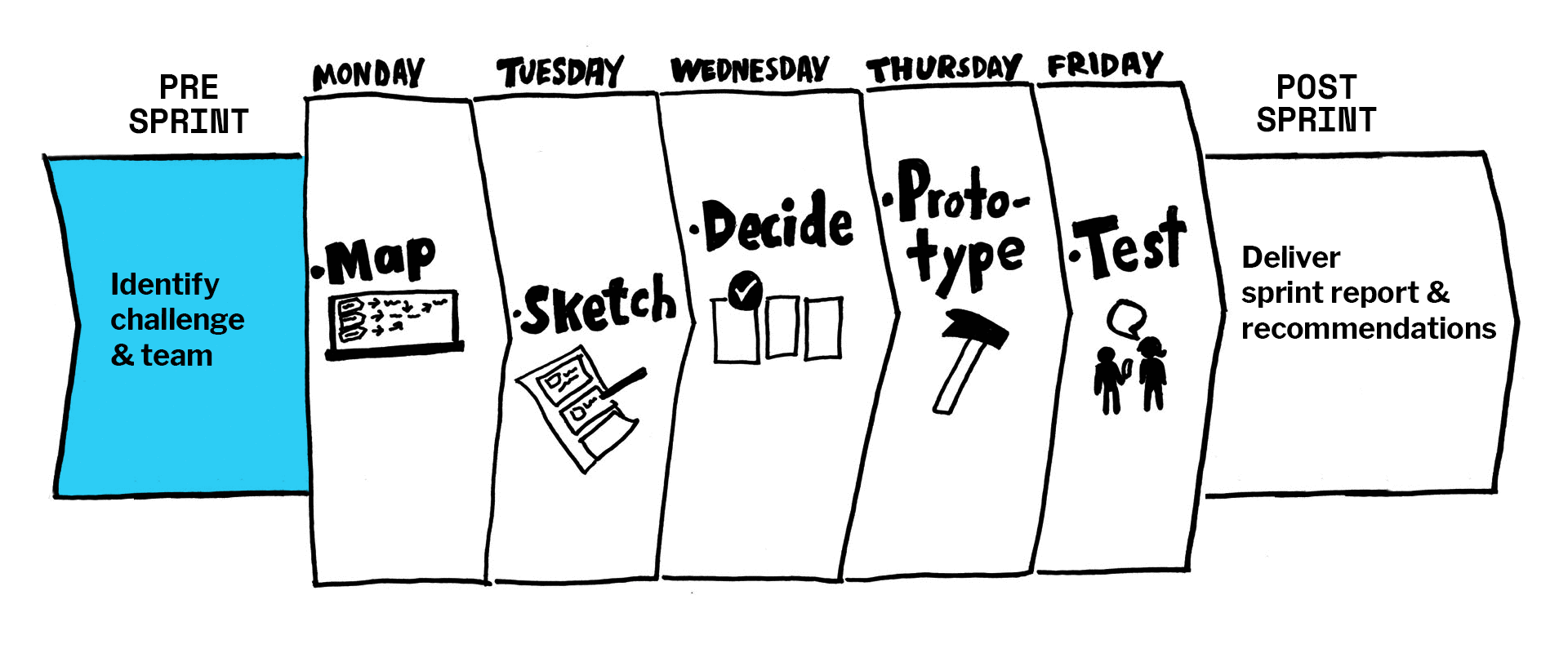
The seven part Design Sprint
A Design Sprint with Daresay
A Design Sprint is a great way to quickly prototype and test ideas. This can be part of a big challenge to meet an organisation’s long-term goals, or something completely different, like a new, innovative idea. During the Sprint you will follow a design process, step by step, that includes interacting with customers, brainstorming, fact checking, building realistic prototypes (well kind of), user testing and more.
A Sprint is a five-day process, but we have chosen to break it down into a seven-step process. You are going to solve big problems, so it’s important the right team is assembled – something that we define before the Sprint once the challenge is set. Also, when the Sprint finished on Friday, there’s a lot of tired people in the room. Following the Sprint, we create a complete report of the week, with recommendations and follow-up steps.
Pre Sprint Identify the challenge and the team*
Before getting started with the actual Sprint there are some things that need to be put in place. Firstly you need a challenge. That challenge can be a product or service, a process, or even market or channel related. Either way, when the Sprint kicks off, you’ll need to know why you are all going to be spending a week together.
Which brings us on nicely to the next point, who will be in the Sprint. Ideally, you won’t be more than seven people – sometimes you can accommodate larger groups, but it isn’t recommended. Picking the team is going to have a big impact on the outcome of the Sprint. Seven like-minded people might make for a pleasant week, but it won’t necessarily produce great results. Therefore a spread of roles and experience is advisable. We like to bring designers and developers from our side, and our clients typically bring project and/or product managers, product specialists and other relevant decision makers, but it will depend on the challenge at hand. Two key roles are the owner of the Sprint (typically the owner of the challenge being addressed by the Sprint) and somebody who is customer-facing.
The third key role, which is done by somebody from Daresay, is the Facilitator. The Facilitator is responsible for managing the Sprint process, ensuring it moves at the right tempo and making sure it reaches its goal. A well-facilitated Sprint is essential for a productive week for the team and your company.
Finally, you have to decide on a location for the Sprint. Wherever possible we recommend that the Sprint takes place in a prominent place at your organisation such as the lobby, or some other accessible space. Doing this makes a Sprint much more inclusive for the organisation as a whole and it can even generate extra user experience if customers visit your office. You can read more on the benefits of a Sprint here.
*Much of this information can be found in “SPRINT – how to solve big problems and test new ideas in just five days”, by Jake Knapp and John Zeratsky, from Google Ventures. We’ve just tailored it to find a way that we think works best for our clients and delivers the best results for them. https://www.thesprintbook.com/
